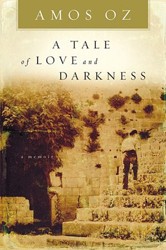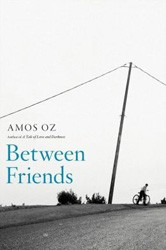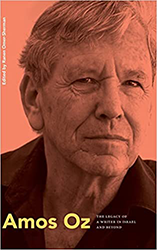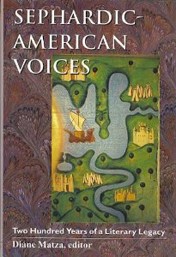For many devotees, the seismic loss of Amos Oz, the preeminent novelist of Israel’s post-statehood generation, remains staggering. There is so much to miss — the obstinate teller of difficult political truths, the radical empathy, lyrical melancholy, the dedicated witness of kibbutz life’s moral triumphs and decay. No wonder that soon after his death from cancer, President Reuven Rivlin eulogized Oz as “the Dostoevsky of the Jewish people.” Fortunately, we now have the precious gift of a final word of sorts, in the posthumous form of Jessica Cohen’s sparkling translation of What Makes an Apple, wide-ranging and penetrating conversations on a variety of subjects with Shira Hadad, his editor and frequent interlocutor.
Oz gave many interviews in his lifetime, but what makes this final book so essential for his devoted readers is its deeply probing, even confrontational nature. Rarely has Oz been quite so introspective and candid when it comes to confronting his ingrained biases as well as personal deficiencies. Hadad proves a sharply observant and tough interlocutor, pressing Oz on other critical points, such as the complicated role of eros and the feminine in his work. Elsewhere, though a combat veteran of two wars, 1967 in the Sinai and 1973 on the Golan Heights, he reveals his surprising incapacity to ever write directly about war.
Given the frequency with which he was labeled a traitor by many Israelis for his staunch advocacy of compromise with the Palestinians, the title of Oz’s triumphant final novel, Judas, might have been a wry self-indictment. The beating heart of this novel is Jerusalem, and he explains to Hadad why he sought to memorialize the feverish intensity of a long-faded generation of cosmopolitans who sought to create a new cultural reality: “I wanted that to be remembered. That Jerusalem of the fiery intellectuals, who stood with one foot in Yosef Haim Brenner and one in the Bible, and another foot in Ben-Gurion’s court and yet another in Nietzsche, and another in Dostoevsky.”
While never quite succumbing to despair, Oz does emerge as a wearied pessimist. He bemoans the current state of academia that reduces literature to “a struggle for power and control … agendas or a cunning attempt to disguise agendas.” Whether or not they agree, his global readership will surely continue to mourn the loss of his prophetic voice amidst the uncertainties and instabilities that lie ahead. Yet at least we now have this lasting coda to his life and art, an eloquent yet intimate portrait of one of the most important Jewish artists and public intellectuals of our time.
Ranen Omer-Sherman is the JHFE Endowed Chair in Judaic Studies at the University of Louisville, author of several books and editor of Amos Oz: The Legacy of a Writer in Israel and Beyond.





